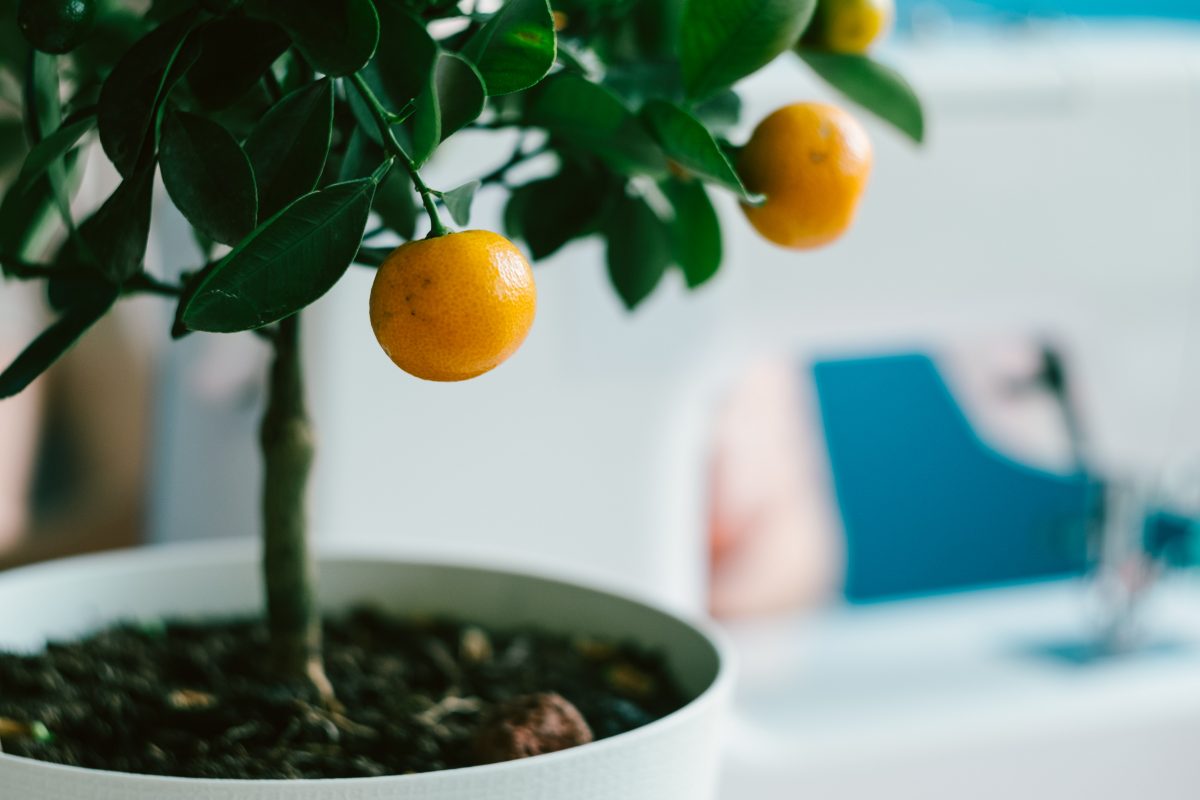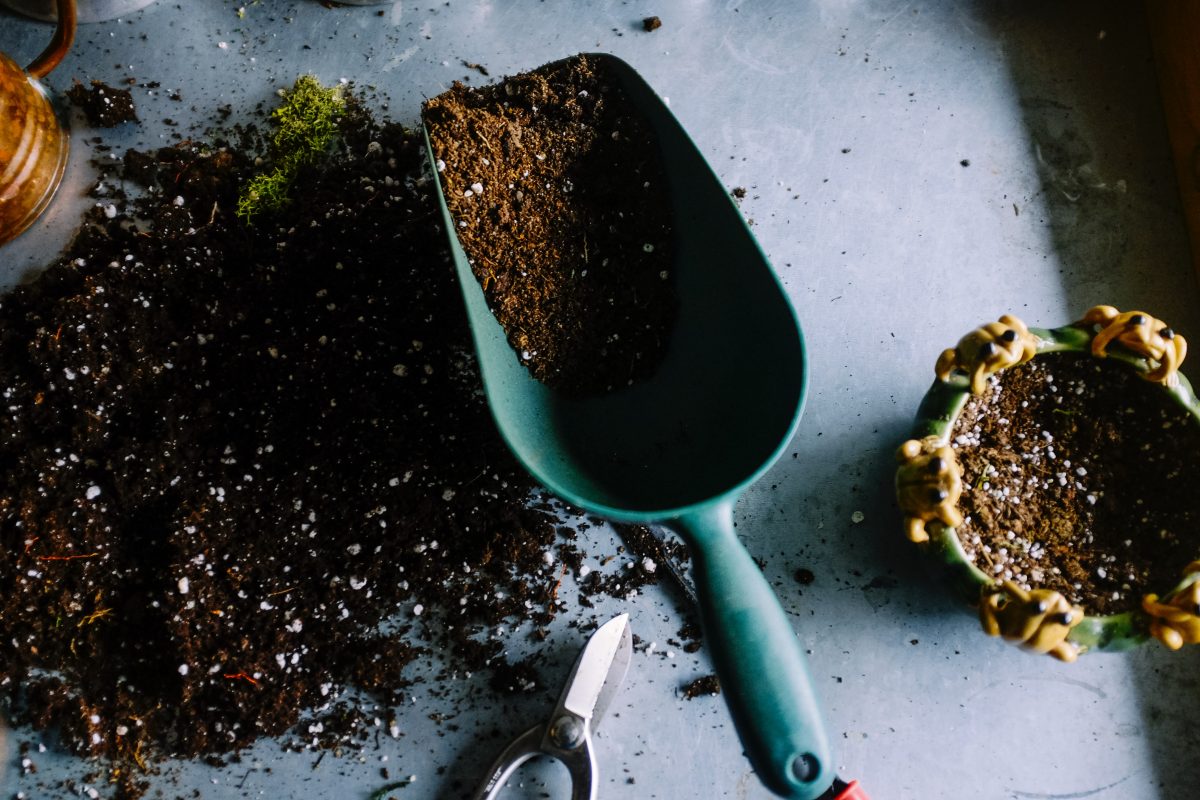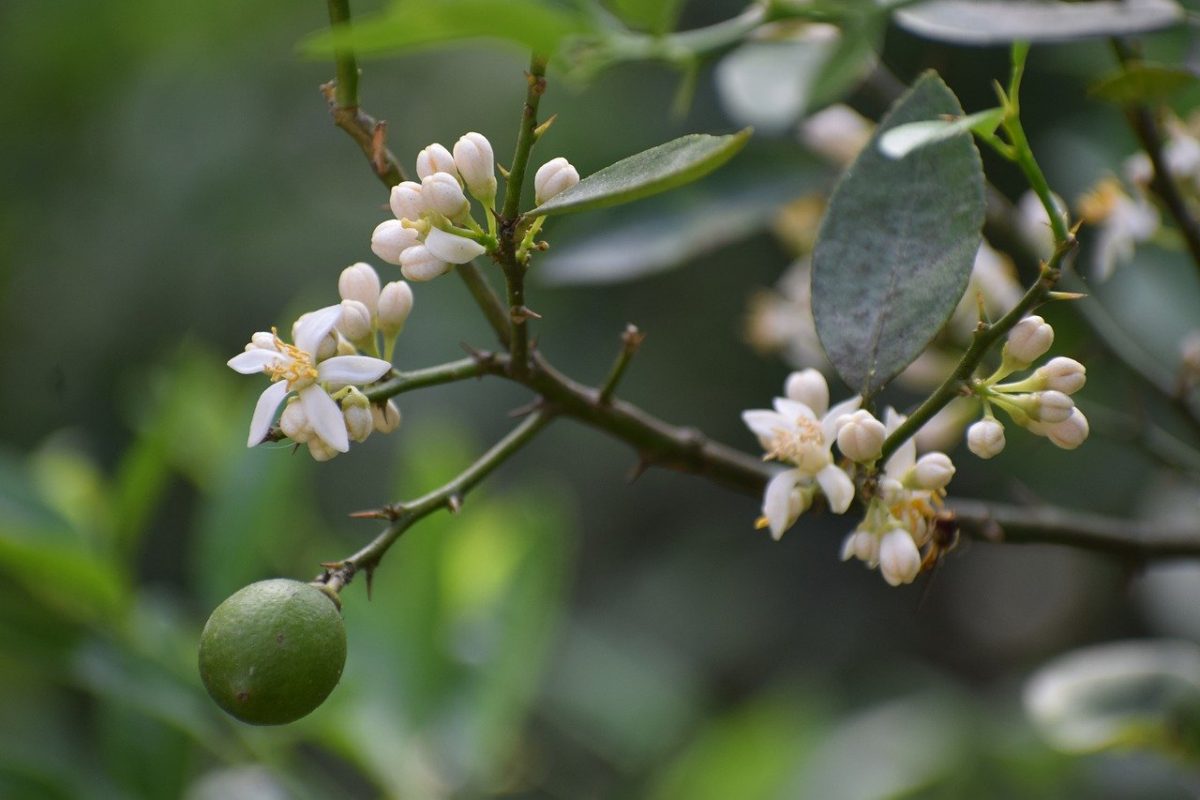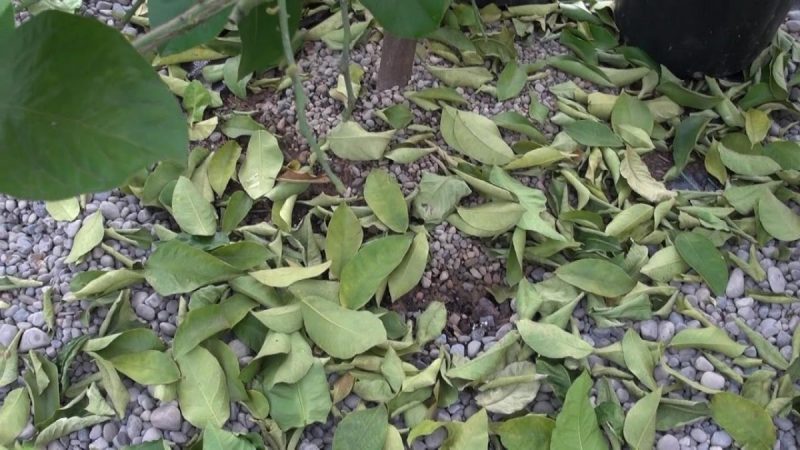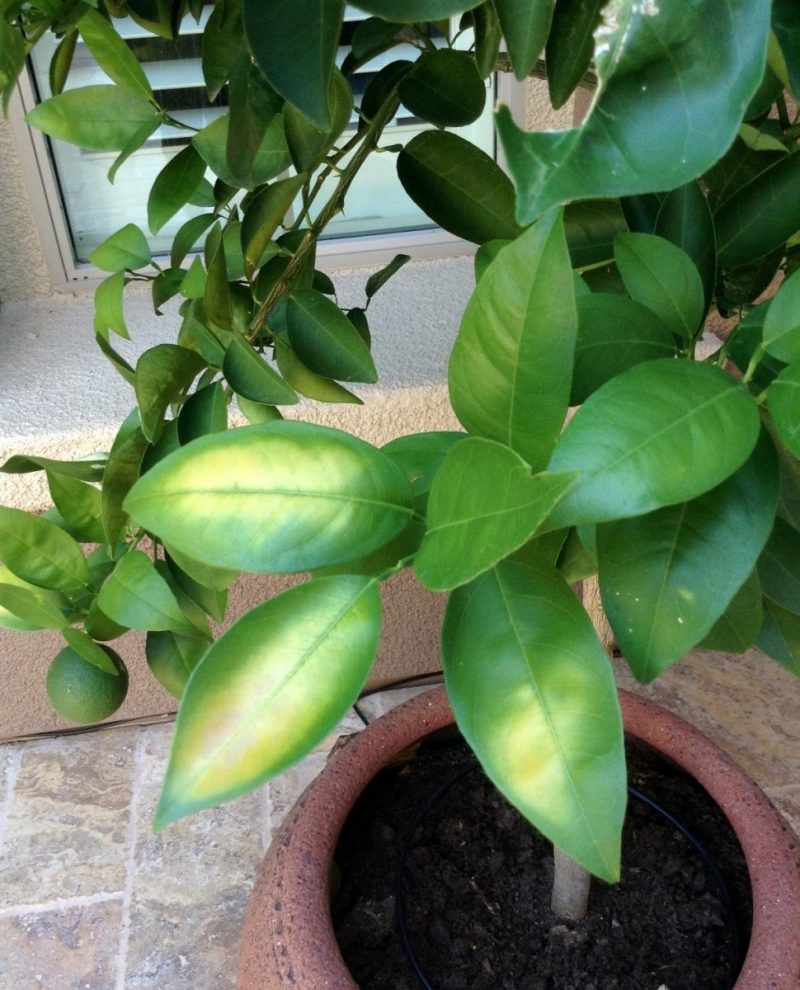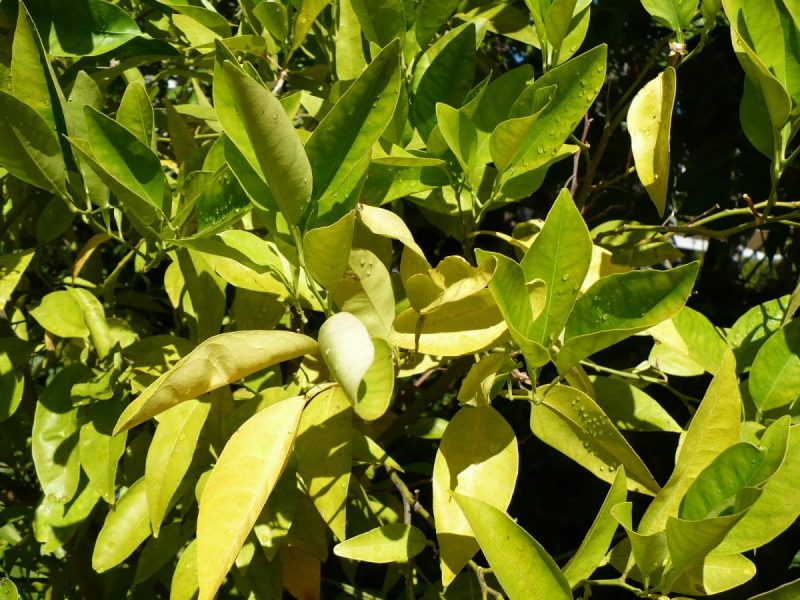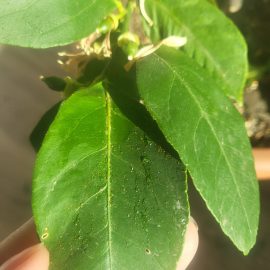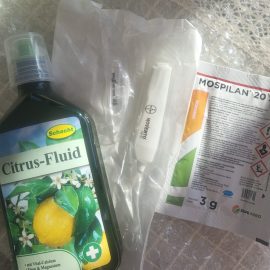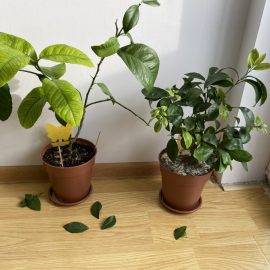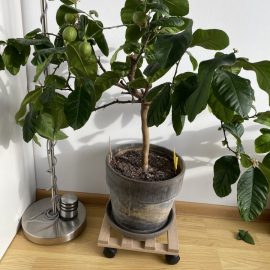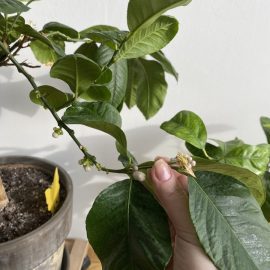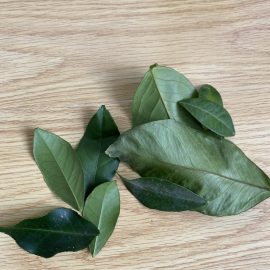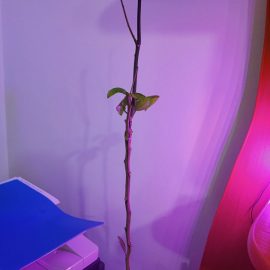Citrus, plant care and growing guide
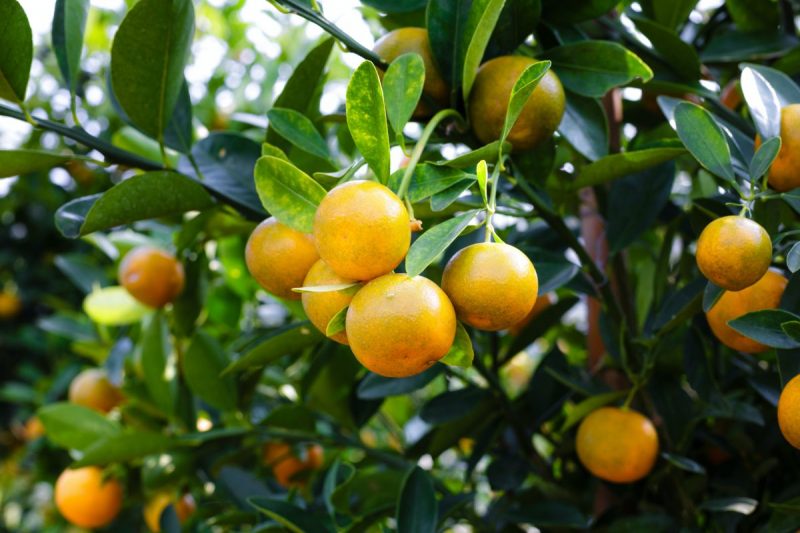
The genus Citrus includes several species of plants such as lemon, orange, grapefruit, pomelo, mandarin, which are commonly called citrus plants. They are part of the Rutaceae family and originate from Asia and Europe. The environmental conditions in countries with a temperate continental transitioning into an oceanic climate are not favorable for the cultivation of citrus plants in the garden, but they can be used as indoor plants, grown in pots.
Although taking care of these species is not easy, the evergreen leaves, the fragrant flowers, and the colorful fruits determine the enthusiasts to give these plants the necessary attention. Depending on the species, some citrus plants are better suited for cultivation in culture pots – dwarf species and certain varieties. When purchasing a citrus plant, it is recommended to choose the species that respond better to growing in this type of pots, and that are, preferably, self-fertile varieties (which pollinate themselves). Nowadays, certain varieties whose flowers pollinate themselves are marketed. Species that naturally grow vigorously can grow in pots until they reach a certain size. This type of plant adapts best to indoor conditions, such as lime, kumquats, calamondin, Buddha’s hand, etc. The biological cycle of citrus plants involves a period of vegetation, characterized by plant growth, flowering, and fruiting and a period of dormancy, usually in winter when lower temperatures occur. This period of rest is very important for the plant to bloom.
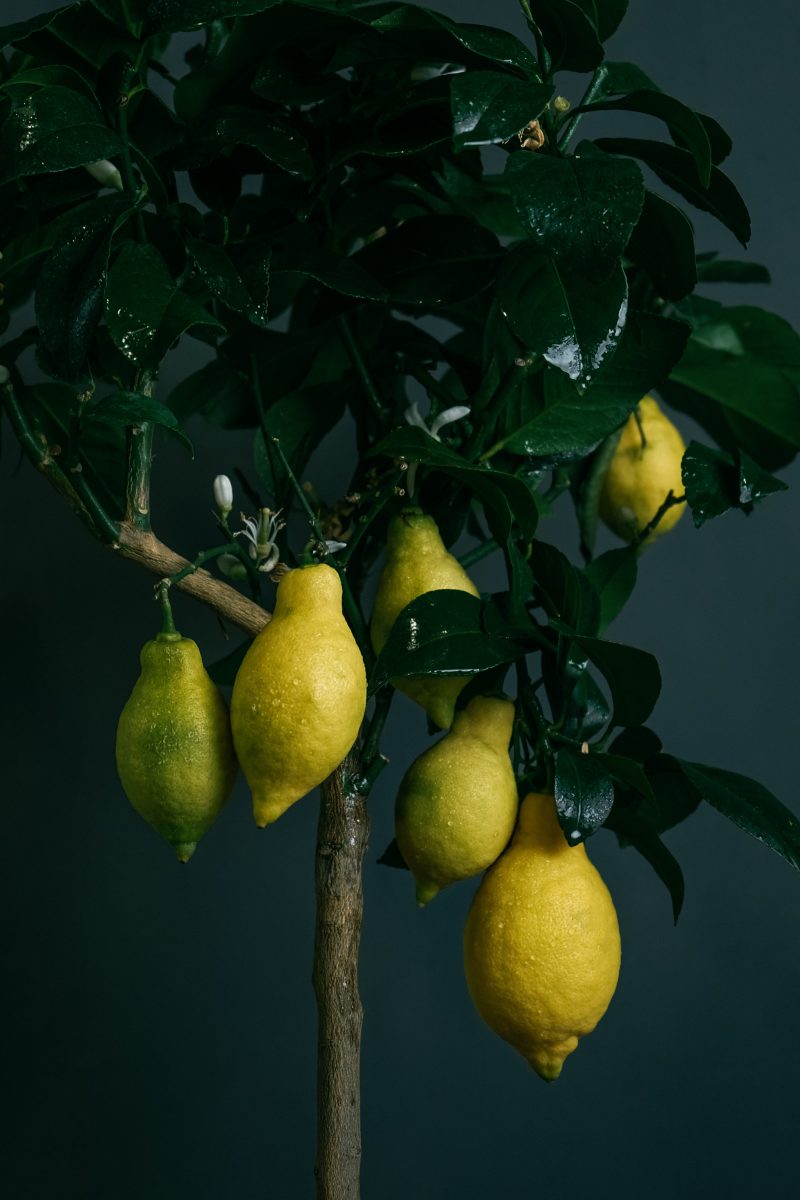
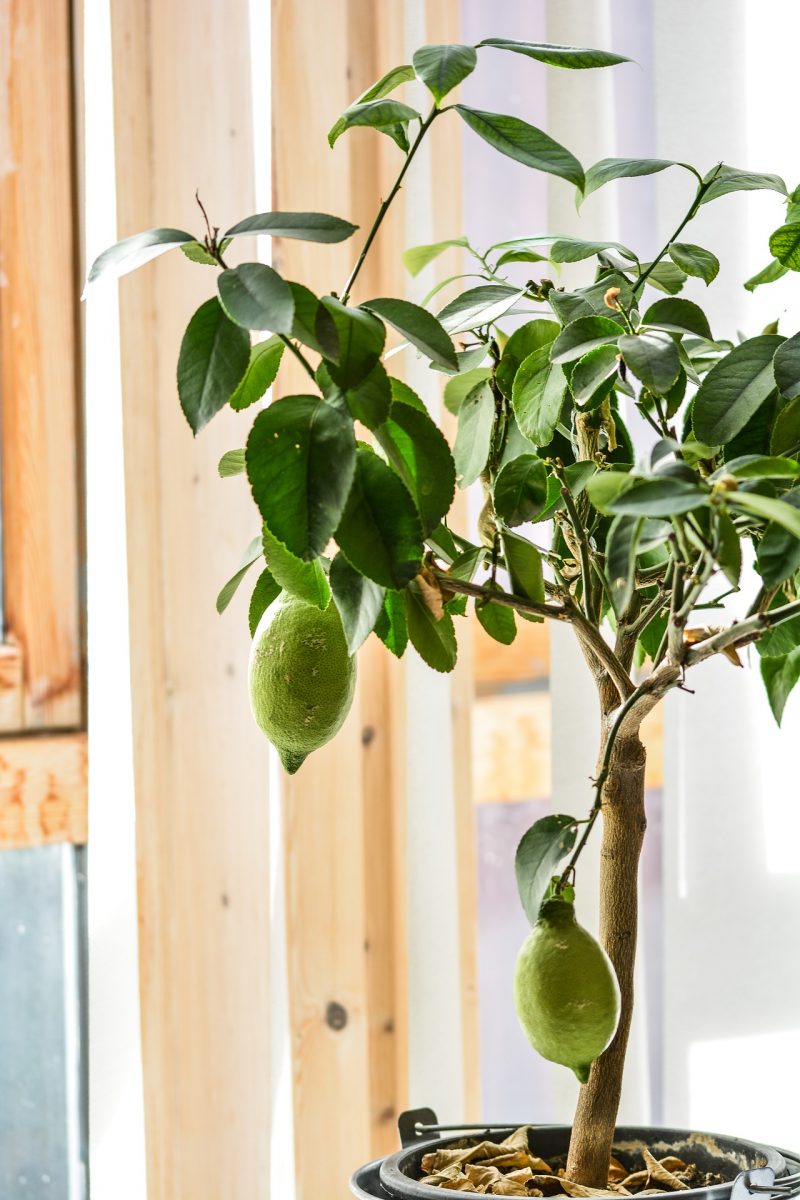
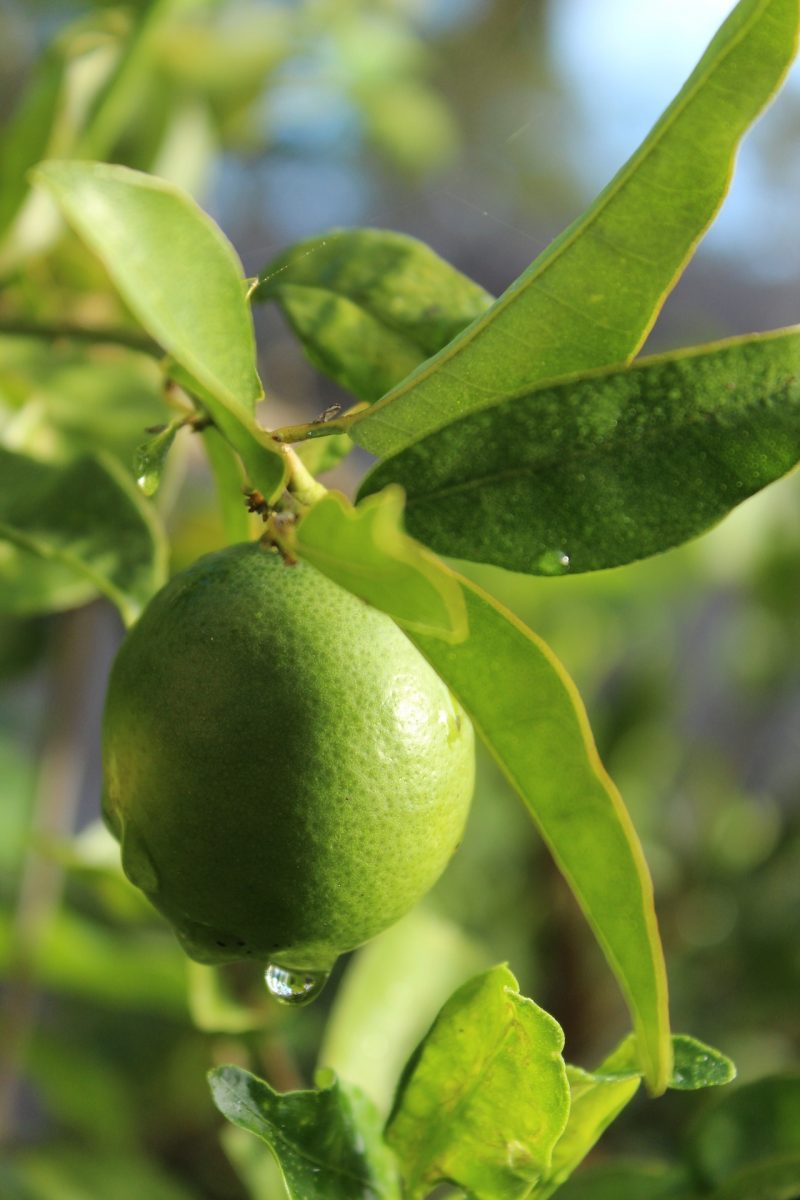
Environmental conditions
Most citrus plants have the same requirements related to environmental conditions and growing them as houseplants requires certain parameters.
Light and temperature
These species are great lovers of light and need to be placed in well-lit places, both in summer and in winter.
During the summer, citrus plants prefer to be taken outside to benefit from sunlight. Be careful not to move them into direct sunlight too early as the plant can suffer leaf burns. Below you will find information about moving the plants outdoors in spring.
During winter, citrus plants need lower temperatures of 10-15° C to be able to enter the dormancy period, which is necessary for flowering in the following spring. During the winter it is recommended to place the plants near a window with southern exposure for them to benefit from as much light as possible. High temperatures in winter are not recommended because they cannot enter dormancy.
Humidity
Citrus plants prefer high atmospheric humidity, so placing them with other plants is favorable. Special attention should be paid to this aspect, especially in winter, when the air tends to be dry indoors.
The leaves should be sprayed with water during the warm season. In winter, spray the leaves only if the temperature is higher than 15° C (below you can find the optimal overwintering conditions).
To keep the relative humidity high, the plant pot can be placed in a tray with stones. So, the roots are protected from excessive water and its evaporation ensures a suitable environment for the plant.
Watering
Problems often arise from improper watering. Excessive watering is not recommended so that the substrate is permanently moist, but the plant should be watered when the substrate is dry on the surface (first 3-5 cm). Excessive watering can lead to root rot, leaf fall, and create an imbalance in the plant.
Out of too much care, the plant is sometimes watered too often. It should be noted that citrus plants prefer to be watered less often, with a larger amount of water than often, with a smaller amount of water.
It is not recommended to water the plants directly with tap water. It should be left in open containers for at least 24 hours to dechlorinate and to reach room temperature.
If there is a possibility to collect rainwater, this is a good option for watering the plants.
Regardless of the water source, it must be at room temperature. Watering with water that is too cold can lead to leaf fall.
It is not possible to determine the exact amount of water and the frequency of watering because they depend very much on the room temperature, possible drafts, the volume of the substrate, and the aspect of the plant. The basic rule remains that the substrate should dry out slightly between two waterings and good drainage of water should be ensured so that the substrate at the base of the pot does not remain too wet for a long time.
Fertilization
Plants need to be fertilized to ensure proper growth and development, flowering, and fruiting. Moreover, pot planting allows roots to explore only a limited volume of the substrate.
The range of available products gives you the advantage of finding fertilizers that were specially designed for citrus plants.
The frequency of fertilization varies depending on the time of year.
In March you can apply a fertilizer with a low nitrogen content, which is favorable to induce blooming.
Starting in May, the plants should be fertilized weekly or once every 2 weeks. It is recommended to use a fertilizer with a balanced content of macroelements and which, preferably, also contains microelements.
The supply of microelements is important, iron playing an important role in the plant’s development.
Recommended products
-
You can find products on a different store
Change Store -
You can find products on a different store
Change Store -
You can find products on a different store
Change Store -
You can find products on a different store
Change Store -
You can find products on a different store
Change Store -
You can find products on a different store
Change Store -
You can find products on a different store
Change Store -
You can find products on a different store
Change Store -
You can find products on a different store
Change Store -
You can find products on a different store
Change Store -
You can find products on a different store
Change Store -
You can find products on a different store
Change Store -
You can find products on a different store
Change Store -
You can find products on a different store
Change Store -
You can find products on a different store
Change Store -
You can find products on a different store
Change Store -
You can find products on a different store
Change Store -
You can find products on a different store
Change Store -
You can find products on a different store
Change Store -
You can find products on a different store
Change Store -
You can find products on a different store
Change Store -
You can find products on a different store
Change Store -
You can find products on a different store
Change Store -
You can find products on a different store
Change Store
Starting with October, when the light’s intensity decreases, the temperatures are lower and the plant’s processes are slower, it is recommended to stop fertilizing or apply fertilizer once every 1-2 months, depending on the plant’s health and the environmental conditions.
Repotting – the right pot and substrate
Repotting should be usually performed once every 1-2 years.
This procedure is recommended when the pot has become too small for the plant and the roots have grown, occupying most of the pot’s volume. Another sign that the pot has become too small, is when the roots start coming out through the drain holes.
To check if the pot is too small, position the plant in an oblique position, carefully remove the pot and check if the roots have grown too much. To make it easier to remove the pot, do not water the plant for a few days.
Citrus plants like to have enough space for their roots and if the repotting is done in time, stress because the pot is too small can be avoided. However, if the repotting is delayed and the roots have grown a lot, the soil should be easily loosened on the edge, so that the roots are scattered. Cut the dried or browned roots.
Since these plants do not prefer water stagnation in the substrate, a layer of stones can be placed before putting the substrate in the pot for good drainage. You can also use small pieces of broken ceramic.
The repotting should be done at the end of winter. Choose a larger pot, both in width and height, with drain holes.
Pay attention! When changing the pot, it is not recommended to be too large because the portion of the substrate that the roots cannot reach, remains wet for too long and this leads to root rot.
Citrus plants prefer a damp, nutrient-rich substrate, which ensures good water drainage. You can use a special substrate for citrus or prepare one using peat, compost, and perlite.
Recommended products
-
You can find products on a different store
Change Store -
You can find products on a different store
Change Store -
You can find products on a different store
Change Store -
You can find products on a different store
Change Store -
You can find products on a different store
Change Store -
You can find products on a different store
Change Store -
You can find products on a different store
Change Store -
You can find products on a different store
Change Store -
You can find products on a different store
Change Store -
You can find products on a different store
Change Store -
You can find products on a different store
Change Store -
You can find products on a different store
Change Store -
You can find products on a different store
Change Store -
You can find products on a different store
Change Store -
You can find products on a different store
Change Store -
You can find products on a different store
Change Store -
You can find products on a different store
Change Store -
You can find products on a different store
Change Store -
You can find products on a different store
Change Store -
You can find products on a different store
Change Store -
You can find products on a different store
Change Store -
You can find products on a different store
Change Store -
You can find products on a different store
Change Store -
You can find products on a different store
Change Store
After repotting, fertilization should start after a month has passed and the plant has settled into the new pot and substrate. Usually, plants bought from the market have a pot that is too small for their size, so after purchasing and settling the plant into its new environment, it is recommended to repot it into a larger pot. If you do not want to change the pot, you can only change a layer of soil from the top. After repotting, the plant should be watered and in the following days, the substrate must be maintained damp.
Pruning
Plants can be left to grow freely and if the shape of the crown is no longer suitable, corrective pruning can be applied. The best time to carry out this work is in spring when the plant is taken outside.
Vigorous, upright growing shoots can be removed if they have grown at the bottom of the crown or shortened if they have grown at the top of the crown. These prunings apply more to mature plants.
If the plant was obtained through grafting, any shoots sprung from the parent stock should be removed.
Recommended products
-
You can find products on a different store
Change Store -
You can find products on a different store
Change Store -
You can find products on a different store
Change Store -
You can find products on a different store
Change Store -
You can find products on a different store
Change Store -
You can find products on a different store
Change Store -
You can find products on a different store
Change Store -
You can find products on a different store
Change Store -
You can find products on a different store
Change Store -
You can find products on a different store
Change Store -
You can find products on a different store
Change Store -
You can find products on a different store
Change Store -
You can find products on a different store
Change Store -
You can find products on a different store
Change Store -
You can find products on a different store
Change Store -
You can find products on a different store
Change Store -
You can find products on a different store
Change Store -
You can find products on a different store
Change Store -
You can find products on a different store
Change Store -
You can find products on a different store
Change Store -
You can find products on a different store
Change Store -
You can find products on a different store
Change Store -
You can find products on a different store
Change Store -
You can find products on a different store
Change Store
Flowering
To bloom, these plants need a lot of light and proper nutrition. So, a sunny location and fertilization are necessary for flowering.
Going through the cold season at lower temperatures and less watering often helps it enter a dormancy period, which is useful for flowering in spring. Temperatures lower than 10° C, but above freezing during the night are favorable for flowering in spring.
The age of the plant plays an important role when it comes to flowering. Most species require at least 4 years to bloom.
Propagation
Citrus plants can be propagated through seeds, cuttings, or grafting, depending on the species and variety.
Plants obtained through seeds require grafting, otherwise, they will bloom after a very long time.
Propagation through cuttings or grafting ensures obtaining a plant that will bloom after 3-4 years. In addition, rooting stimulators can also be used.
Recommended products
-
You can find products on a different store
Change Store -
You can find products on a different store
Change Store -
You can find products on a different store
Change Store -
You can find products on a different store
Change Store -
You can find products on a different store
Change Store -
You can find products on a different store
Change Store -
You can find products on a different store
Change Store -
You can find products on a different store
Change Store -
You can find products on a different store
Change Store -
You can find products on a different store
Change Store -
You can find products on a different store
Change Store -
You can find products on a different store
Change Store -
You can find products on a different store
Change Store -
You can find products on a different store
Change Store -
You can find products on a different store
Change Store -
You can find products on a different store
Change Store -
You can find products on a different store
Change Store -
You can find products on a different store
Change Store -
You can find products on a different store
Change Store -
You can find products on a different store
Change Store -
You can find products on a different store
Change Store -
You can find products on a different store
Change Store -
You can find products on a different store
Change Store -
You can find products on a different store
Change Store
Recommended products
-
You can find products on a different store
Change Store -
You can find products on a different store
Change Store -
You can find products on a different store
Change Store -
You can find products on a different store
Change Store -
You can find products on a different store
Change Store -
You can find products on a different store
Change Store -
You can find products on a different store
Change Store -
You can find products on a different store
Change Store -
You can find products on a different store
Change Store -
You can find products on a different store
Change Store -
You can find products on a different store
Change Store -
You can find products on a different store
Change Store -
You can find products on a different store
Change Store -
You can find products on a different store
Change Store -
You can find products on a different store
Change Store -
You can find products on a different store
Change Store -
You can find products on a different store
Change Store -
You can find products on a different store
Change Store -
You can find products on a different store
Change Store -
You can find products on a different store
Change Store -
You can find products on a different store
Change Store -
You can find products on a different store
Change Store -
You can find products on a different store
Change Store -
You can find products on a different store
Change Store
In the case of grafting, mastic can be used to protect the resulting wounds.
Recommended products
-
You can find products on a different store
Change Store -
You can find products on a different store
Change Store -
You can find products on a different store
Change Store -
You can find products on a different store
Change Store -
You can find products on a different store
Change Store -
You can find products on a different store
Change Store -
You can find products on a different store
Change Store -
You can find products on a different store
Change Store -
You can find products on a different store
Change Store -
You can find products on a different store
Change Store -
You can find products on a different store
Change Store -
You can find products on a different store
Change Store -
You can find products on a different store
Change Store -
You can find products on a different store
Change Store -
You can find products on a different store
Change Store -
You can find products on a different store
Change Store -
You can find products on a different store
Change Store -
You can find products on a different store
Change Store -
You can find products on a different store
Change Store -
You can find products on a different store
Change Store -
You can find products on a different store
Change Store -
You can find products on a different store
Change Store -
You can find products on a different store
Change Store -
You can find products on a different store
Change Store
Overwintering
This period offers the chance to go through dormancy for the plant to bloom in spring. Thus, with the arrival of autumn and after moving the plant indoors, watering and fertilization must be reduced, and the plant should be placed in a bright place, preferably with southern exposure and temperatures between 10 and 15° C. If the temperature drops during the night slightly below 10 ° C, it is not a problem, and it is even recommended.
If the ambient temperature exceeds 15° C, the plants should be watered more often, but, as mentioned above, this temperature is not favorable for spring flowering.
Citrus plants do not prefer drafts and should not be placed near doors or windows that are frequently opened.
Moving the plants indoors/outdoors
The environmental conditions in countries with a temperate continental transitioning into an oceanic climate allow the growth of these species as indoor plants, but during the warm season, citrus plants thrive outside, when located on a terrace where they benefit from plenty of sunlight.
Careful! Moving it from the house and placing it in direct sunlight in the spring leads to the appearance of leaf sunburn, a problem encountered in any species, regardless of the light preferences.
It is very important that moving the plant from inside to outside in spring and vice versa, in autumn, be performed so that the plant will be as little stressed as possible. Otherwise, you will encounter various problems such as leaves/flowers/fruits dropping, stagnant growth, etc.
For the plant not to suffer, it must go through acclimatization. The plant will gradually get used to the new light and temperature conditions. Moving it outdoors in spring should be done when there is no longer a risk of temperatures below 10 °C.
In the first days, the plant should be placed in an area where it can benefit from as much light as possible, but not in direct sunlight. On the first day, it should be moved for one hour in direct sunlight, after which it should be moved back away from direct sunlight. The next day, add about an hour to the time spent by the plant in direct sunlight. Proceed in this way for 1-2 weeks, during which the plant will adapt to the new environmental conditions. If signs of sunburn are observed even after acclimatization, the plant must be moved to a partially shaded place during the hours with very high temperatures and the acclimatization process should be continued.
As the plant will need to be moved every day, it can be placed on wheeled support for this procedure.
The foliar application of specific fertilizers helps the plant to overcome the stress caused by this change faster.
Extra attention should be paid to the amount of water given after taking the plant outside because, due to higher temperatures and drafts, the substrate will dry out faster and the plant will need more water The rule is that the first 3-5 cm of the substrate should be allowed to dry before you water the plant again.
If the temperatures during the night drop below 10° C, the plant should be brought indoors.
In autumn, you should do the opposite: place the plant in a shady place to accommodate the light and lower temperature for 1-2 weeks. It no longer needs to be moved daily, but it still needs to benefit from light. Watering should be gradually reduced. When temperatures reach values around 10 ° C, the plant should be moved indoors.
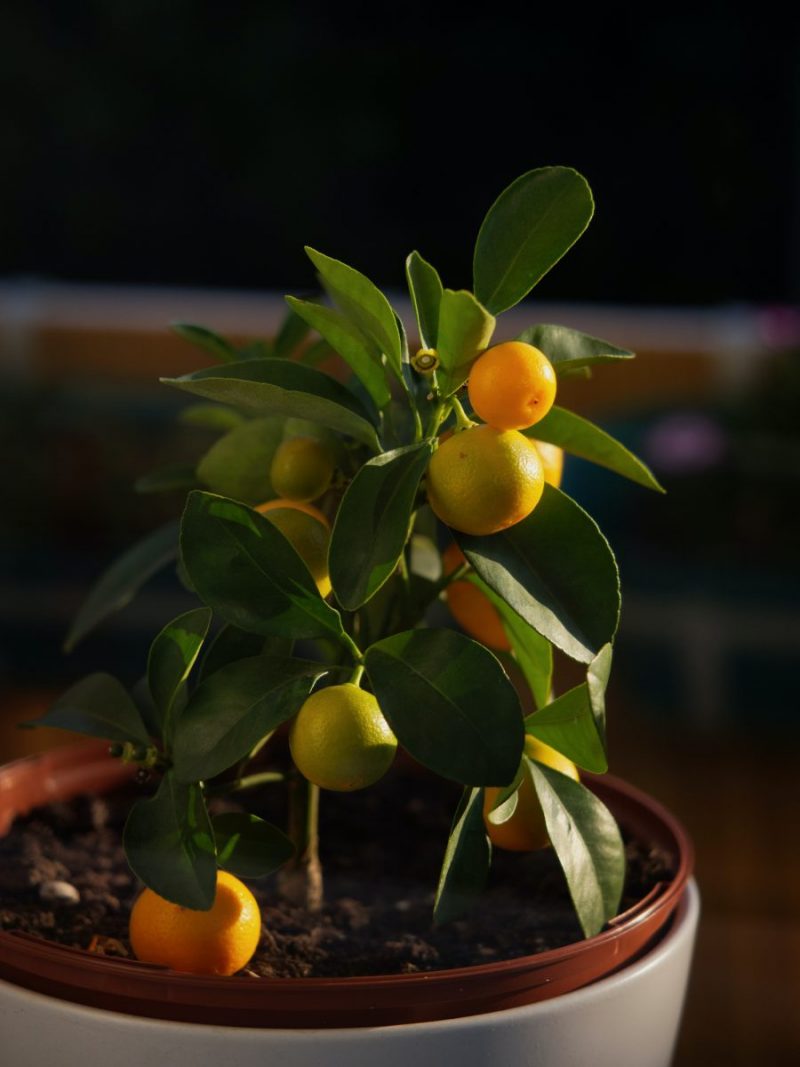
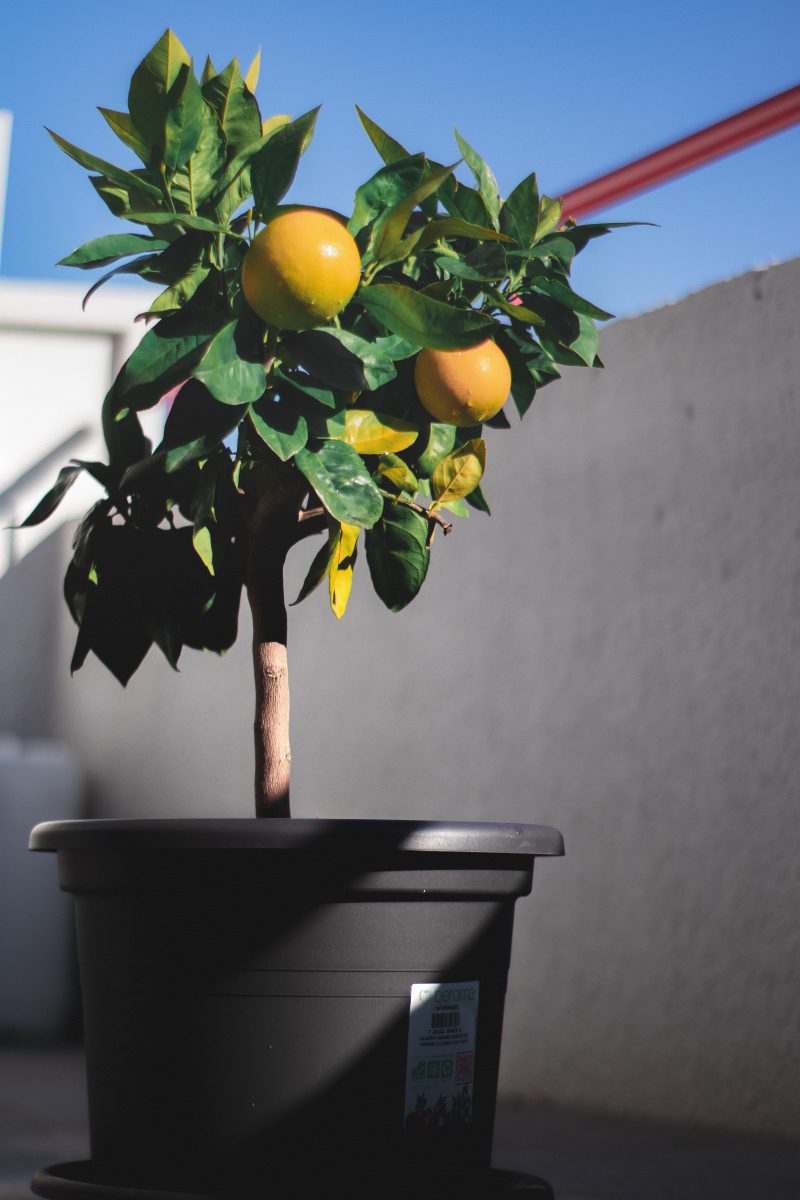
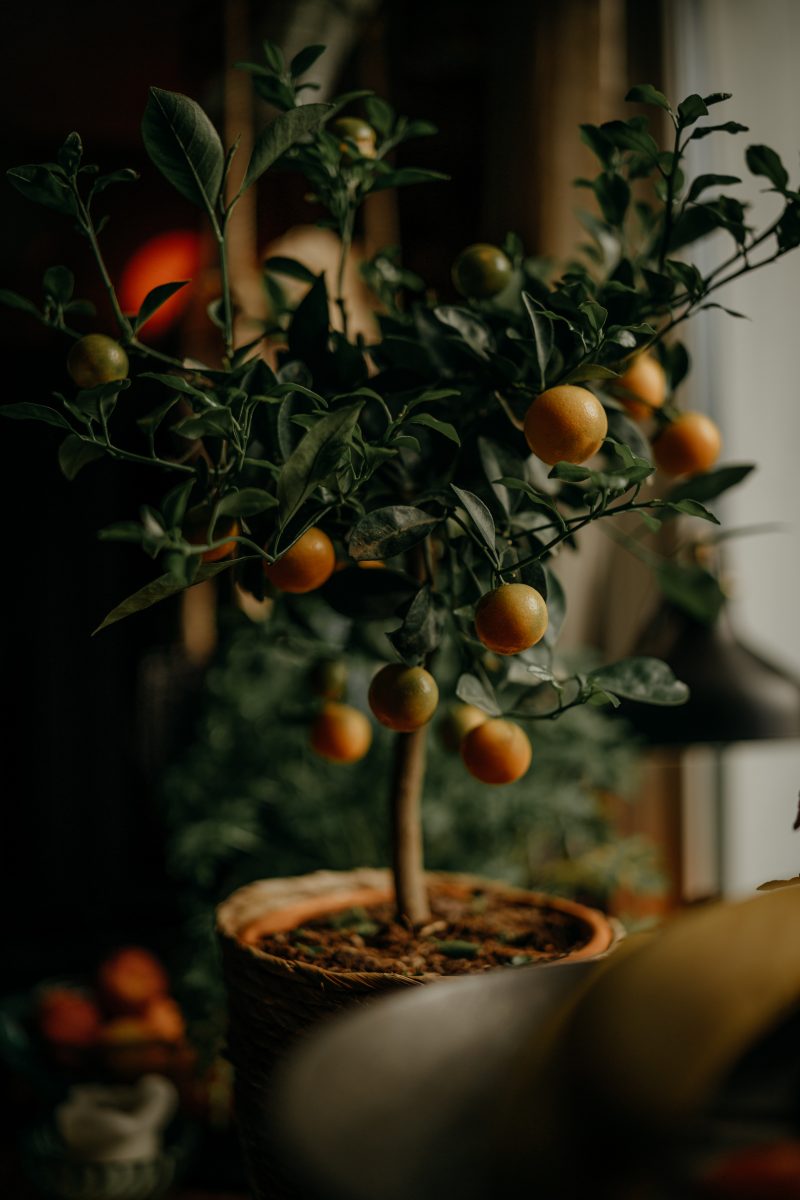
Other problems that may occur
We often face problems caused by abiotic diseases, because of inappropriate environmental factors or inadequate nutrition. These symptoms are often confused with biotic diseases but, most of the time, we are dealing with dysfunctions in the physiological processes of the plant.
Leaf fall
This problem can be caused by various factors, such as:
- insufficient or excessive watering;
- sudden change in temperature or light intensity after moving the plant;
- inadequate nutrition;
- the presence of a disease or a pest, but in this case, specific symptoms are usually also observed.
In winter, citrus plants tend to lose some of their leaves due to low atmospheric humidity or uncorrelated environmental factors (temperature, light, and water). This reaction should be avoided, but the plant does not die and will regenerate in spring. It is an often mistake to excessively water or fertilizes plants at the first signs of leaf fall, a procedure that can eventually lead to plant death.
When this problem occurs, it is necessary to find the cause of the leaf drop.
Fruit fall
It can be caused by any element’s deficiency, sudden changes in temperature, or large variations in substrate humidity (too high or too low humidity).
Sunburn
These usually occur when the plant is moved to a sunny place without being acclimatized. In this case, specific light-colored spots appear. The tissue that has burns on it will not regenerate and it is recommended to remove the leaves that have these symptoms.
Yellowed leaves
Proper nutrition plays an important role in plant growth and development. When one of the elements is deficient, an imbalance occurs that causes various problems.
Iron deficiency is common in citrus plants and is manifested by the yellowing of the foliar limb between the veins, and the area near the veins remains green. Symptoms begin to appear from the top of the shoots. In case of severe deficiency, the basal leaves also turn yellow.
Nitrogen deficiency is manifested through total yellowing of the leaves, including discoloration of the veins, and begins with the basal leaves.
Recommended products
-
You can find products on a different store
Change Store -
You can find products on a different store
Change Store -
You can find products on a different store
Change Store -
You can find products on a different store
Change Store -
You can find products on a different store
Change Store -
You can find products on a different store
Change Store -
You can find products on a different store
Change Store -
You can find products on a different store
Change Store -
You can find products on a different store
Change Store -
You can find products on a different store
Change Store -
You can find products on a different store
Change Store -
You can find products on a different store
Change Store -
You can find products on a different store
Change Store -
You can find products on a different store
Change Store -
You can find products on a different store
Change Store -
You can find products on a different store
Change Store -
You can find products on a different store
Change Store -
You can find products on a different store
Change Store -
You can find products on a different store
Change Store -
You can find products on a different store
Change Store -
You can find products on a different store
Change Store -
You can find products on a different store
Change Store -
You can find products on a different store
Change Store -
You can find products on a different store
Change Store
Glossy leaves
Citrus plants have natural glossy leaves if they are well cared for and properly fertilized. However, there are times when an adherent liquid can be seen on the leaves, called “honeydew”, which is associated with the presence of aphids, whiteflies, scale insects, and mealybugs. To eliminate this inconvenience, it is recommended to control the pests and to wipe the liquid off the leaves with a damp cloth.














































































































































































































































































































































































































































